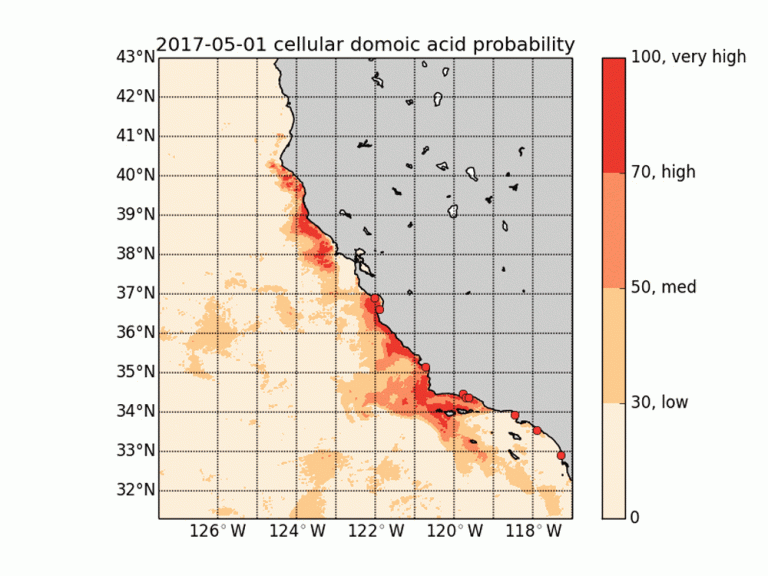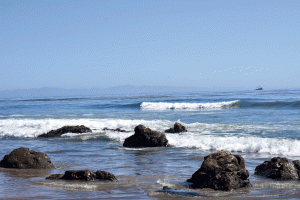
The Bottom Line Staff Report
Spring brings about flourishing plant life in the ocean as well as on land. Phytoplankton blooms off the coast of California have been larger than normal this year, particularly in late April.
The cyanobacteria in this spring’s bloom creates higher levels of domoic acid. When the domoic acid reaches a certain quantity, the algae bloom is given the label Harmful Algae Bloom (HAB) due to its impact on the mammal populations.
As a result, sea lions are washing up on Isla Vista beaches and throughout the California coast from the toxic algae in their food web. The domoic acid gets into their bodies when they eat fish.
Although naturally existing, the domoic acid becomes toxic to the seal’s brain when it digests too much. The neurotoxin can cause the animal to have psychosis, seizures, or even death.
As a result of eating the contaminated fish, the seals will also have reduced ability to hunt for fish or navigate through the coastal waters. Many choose to come ashore for safety, and can even end up stranded on the beach, tanning like a sunbather.
Domoic acid poisoning not only affects the seals who eat fish, but the HAB can potentially have impact on human health. The California Department of Health states that “Santa Barbara county residents have been advised not to eat mussels, clams, or scallops due to dangerous levels of domoic acid.”
The entire ocean ecosystem gets affected by these algae blooms. Noticed by many people who are regularly in the ocean, HABs are often referred to as ‘red tide’.

Seals wash up on shore after dying at sea.
The phytoplankton blooms have been occurring in greater number during recent years. Some research has connected the blooms to “ocean pollution from chemicals like fertilizers and warming ocean temperatures associated with global climate change.”
In addition, the marine mammal rescue organizations have been overwhelmed by the number of seals washing up on beaches. “As of Friday, April 21st, we started getting inundated. The floodgates opened.” said Sam Dover, a veterinarian and executive director of the Channel Islands Marine and Wildlife institute.
The number of marine mammals getting stuck ashore has been increasing as a result of the HAB this year. It has increased so much so that it lead the State of California, backed by Senator Toni Atkins, to announce Apr. 27 as the official Marine Mammal Rescue Day.
This resolution will help the eight member organizations within the Marine Mammal Stranding Network obtain the necessary resources to aid the dying seals.
In addition to the affected seals, “dolphins have been impacted as well. Two died within minutes of stranding on Ventura County beaches,” said Dover.
Algal blooms are a reoccurring event increasing its impact as environmental conditions change. The last time a HAB event happened, in 1998, similar ramifications on the seal population were seen. According to a study of marine mammals, “Over 400 California sea lions […] died and many others displayed signs of neurological dysfunction along the central California coast during May and June 1998.”
Although not confirmed, the likely source of the HAB are the increased runoff from the heavy rains this winter. The runoff of freshwater into marine ecosystems is generally associated with the higher levels of algae blooms.
Anthony Lai and Quincy Lee contributed to this article.










